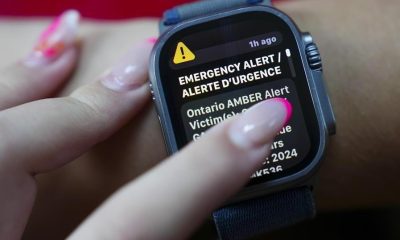Science
Study gets real on climate change: Antarctica faces the ‘unavoidable’ melting of enough ice to raise sea levels nearly 6 feet – Fortune
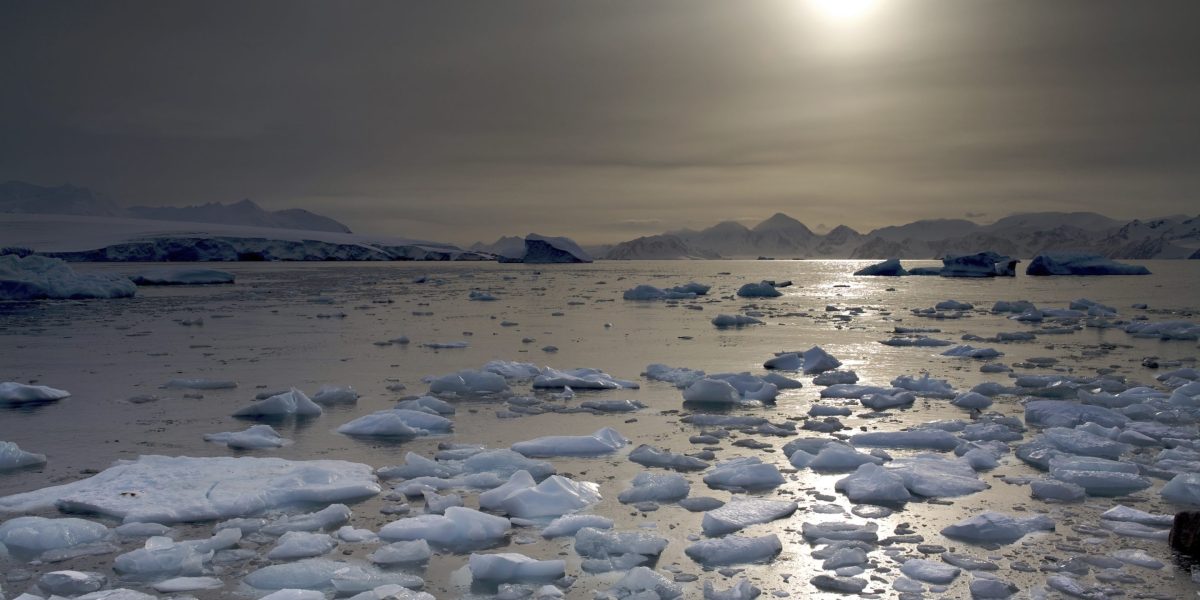
No matter how much the world cuts back on carbon emissions, a key and sizable chunk of Antarctica is essentially doomed to an “unavoidable” melt, a new study found.
Though the full melt will take hundreds of years, slowly adding nearly 6 feet (1.8 meters) to sea levels, it will be enough to reshape where and how people live in the future, the study’s lead author said.
Researchers used computer simulations to calculate future melting of protective ice shelves jutting over Antarctica’s Amundsen Sea in western Antarctica. The study in Monday’s journal Nature Climate Change found even if future warming was limited to just a few tenths of a degree more – an international goal that many scientists say is unlikely to be met – it would have “limited power to prevent ocean warming that could lead to the collapse of the West Antarctic Ice Sheet.”
“Our main question here was: How much control do we still have over ice shelf melting? How much melting can still be prevented by reducing emissions?” said study lead author Kaitlin Naughten, an oceanographer at the British Antarctic Survey. “Unfortunately, it’s not great news. Our simulations suggest that we are now committed to the rapid increase in the rate of ocean warming and ice shelf melting over the rest of the century.”
While past studies have talked about how dire the situation is, Naughten was the first to use computer simulations to study the key melting component of warm water melting ice from below, and the work looked at four different scenarios for how much carbon dioxide the world pumps into the atmosphere. In each case, ocean warming was just too much for this section of the ice sheet to survive, the study found.
Naughten looked at melting gatekeeper ice shelves, which float over the ocean in this area of Antarctica that is already below sea level. Once these ice shelves melt, there’s nothing to stop the glaciers behind them from flowing into the sea.
Naughten specifically looked at what would happen if somehow future warming was limited to 1.5 degrees Celsius (2.7 degrees Fahrenheit) over mid-19th century levels — the international goal — and found the runaway melting process anyway. The world has already warmed about 1.2 degrees Celsius (nearly 2.2 degrees Fahrenheit) since pre-industrial times and much of this summer temporarily shot past the 1.5 mark.
Naughten’s study concentrated on the part of the West Antarctic Ice Sheet that is most at risk from melting from below, near the Amundsen Sea. It includes the massive Thwaites ice shelf that is melting so fast it got the nickname “the Doomsday Glacier.” West Antarctica is only one-tenth of the southern continent but is more unstable than the larger eastern side.
That part of Antarctica “is doomed,” said University of California Irvine ice scientist Eric Rignot, who wasn’t part of the study. “The damage has already been done.”
University of Colorado ice scientist Ted Scambos, who also wasn’t part of the study, said this ice sheet “eventually is going to collapse. It’s not a happy conclusion and it is one that I’m only saying reluctantly.”
Naughten doesn’t like to use the word “doomed,” because she said 100 years from now the world might not just stop but reverse carbon levels in the air and global warming. But she said what’s happening now on the ground is a slow collapse that can’t be stopped, at least not in this century.
“I think it’s unavoidable that some of this area is lost. It’s unavoidable that the problem gets worse,” Naughten told The Associated Press. “It isn’t unavoidable that we lose all of it because sea level rise happens over the very long term. I only looked in this study up to 2100. So after 2100, we probably have some control still.”
No matter what words are used, Naughten said she and other scientists studying the area in previous research conclude that this part of Antarctica “couldn’t be saved or a lot of it couldn’t be saved.”
Naughten’s study did not calculate how much ice would be lost, how much sea level would rise and at what speed. But she estimated that the amount of ice in the area most at risk if it all melted would raise sea levels by about 1.8 meters (5.9 feet).
However, she said, that is a slow process that would play out through the next few hundred years through the 2300s, 2400s and 2500s.
Naughten said that may seem like a long way away, but noted that if the Victorians of the 1800s had done something to drastically change the shape of our world, we would not look well on them.
This type of sea level rise would be “absolutely devastating” if it happened over 200 years, but if it could be stretched out over 2,000 years, humanity could adapt, Naughten said.
“Coastal communities will either have to build around or be abandoned,” Naughten said.
While this part of Antarctica’s ice sheet is destined to be lost, other vulnerable sections of Earth’s environment can still be saved by reducing heat-trapping emissions so there is reason to still cut back on carbon pollution, Naughten said.
Twila Moon, deputy chief scientist at the National Snow and Ice Data Center who wasn’t part of the research, said she worries that most people will see nothing but doom and gloom in the research.
“I don’t see a lot of hope,” Naughten said. “But it’s what the science tells me. So that’s what I have to communicate to the world.”
Naughten quoted former NASA scientist Kate Marvel, saying “when it comes to climate change we need courage and not hope. Courage is the resolve to do well without the assurance of a happy ending.”
___
Read more of AP’s climate coverage at http://www.apnews.com/climate-and-environment.
___
Associated Press climate and environmental coverage receives support from several private foundations. See more about AP’s climate initiative here. The AP is solely responsible for all content.
Science
Asteroid Apophis will visit Earth in 2029, and this European satellite will be along for the ride

The European Space Agency is fast-tracking a new mission called Ramses, which will fly to near-Earth asteroid 99942 Apophis and join the space rock in 2029 when it comes very close to our planet — closer even than the region where geosynchronous satellites sit.
Ramses is short for Rapid Apophis Mission for Space Safety and, as its name suggests, is the next phase in humanity’s efforts to learn more about near-Earth asteroids (NEOs) and how we might deflect them should one ever be discovered on a collision course with planet Earth.
In order to launch in time to rendezvous with Apophis in February 2029, scientists at the European Space Agency have been given permission to start planning Ramses even before the multinational space agency officially adopts the mission. The sanctioning and appropriation of funding for the Ramses mission will hopefully take place at ESA’s Ministerial Council meeting (involving representatives from each of ESA’s member states) in November of 2025. To arrive at Apophis in February 2029, launch would have to take place in April 2028, the agency says.
This is a big deal because large asteroids don’t come this close to Earth very often. It is thus scientifically precious that, on April 13, 2029, Apophis will pass within 19,794 miles (31,860 kilometers) of Earth. For comparison, geosynchronous orbit is 22,236 miles (35,786 km) above Earth’s surface. Such close fly-bys by asteroids hundreds of meters across (Apophis is about 1,230 feet, or 375 meters, across) only occur on average once every 5,000 to 10,000 years. Miss this one, and we’ve got a long time to wait for the next.
When Apophis was discovered in 2004, it was for a short time the most dangerous asteroid known, being classified as having the potential to impact with Earth possibly in 2029, 2036, or 2068. Should an asteroid of its size strike Earth, it could gouge out a crater several kilometers across and devastate a country with shock waves, flash heating and earth tremors. If it crashed down in the ocean, it could send a towering tsunami to devastate coastlines in multiple countries.
Over time, as our knowledge of Apophis’ orbit became more refined, however, the risk of impact greatly went down. Radar observations of the asteroid in March of 2021 reduced the uncertainty in Apophis’ orbit from hundreds of kilometers to just a few kilometers, finally removing any lingering worries about an impact — at least for the next 100 years. (Beyond 100 years, asteroid orbits can become too unpredictable to plot with any accuracy, but there’s currently no suggestion that an impact will occur after 100 years.) So, Earth is expected to be perfectly safe in 2029 when Apophis comes through. Still, scientists want to see how Apophis responds by coming so close to Earth and entering our planet’s gravitational field.
“There is still so much we have yet to learn about asteroids but, until now, we have had to travel deep into the solar system to study them and perform experiments ourselves to interact with their surface,” said Patrick Michel, who is the Director of Research at CNRS at Observatoire de la Côte d’Azur in Nice, France, in a statement. “Nature is bringing one to us and conducting the experiment itself. All we need to do is watch as Apophis is stretched and squeezed by strong tidal forces that may trigger landslides and other disturbances and reveal new material from beneath the surface.”
By arriving at Apophis before the asteroid’s close encounter with Earth, and sticking with it throughout the flyby and beyond, Ramses will be in prime position to conduct before-and-after surveys to see how Apophis reacts to Earth. By looking for disturbances Earth’s gravitational tidal forces trigger on the asteroid’s surface, Ramses will be able to learn about Apophis’ internal structure, density, porosity and composition, all of which are characteristics that we would need to first understand before considering how best to deflect a similar asteroid were one ever found to be on a collision course with our world.
Besides assisting in protecting Earth, learning about Apophis will give scientists further insights into how similar asteroids formed in the early solar system, and, in the process, how planets (including Earth) formed out of the same material.
One way we already know Earth will affect Apophis is by changing its orbit. Currently, Apophis is categorized as an Aten-type asteroid, which is what we call the class of near-Earth objects that have a shorter orbit around the sun than Earth does. Apophis currently gets as far as 0.92 astronomical units (137.6 million km, or 85.5 million miles) from the sun. However, our planet will give Apophis a gravitational nudge that will enlarge its orbit to 1.1 astronomical units (164.6 million km, or 102 million miles), such that its orbital period becomes longer than Earth’s.
It will then be classed as an Apollo-type asteroid.
Ramses won’t be alone in tracking Apophis. NASA has repurposed their OSIRIS-REx mission, which returned a sample from another near-Earth asteroid, 101955 Bennu, in 2023. However, the spacecraft, renamed OSIRIS-APEX (Apophis Explorer), won’t arrive at the asteroid until April 23, 2029, ten days after the close encounter with Earth. OSIRIS-APEX will initially perform a flyby of Apophis at a distance of about 2,500 miles (4,000 km) from the object, then return in June that year to settle into orbit around Apophis for an 18-month mission.
Related Stories:
Furthermore, the European Space Agency still plans on launching its Hera spacecraft in October 2024 to follow-up on the DART mission to the double asteroid Didymos and Dimorphos. DART impacted the latter in a test of kinetic impactor capabilities for potentially changing a hazardous asteroid’s orbit around our planet. Hera will survey the binary asteroid system and observe the crater made by DART’s sacrifice to gain a better understanding of Dimorphos’ structure and composition post-impact, so that we can place the results in context.
The more near-Earth asteroids like Dimorphos and Apophis that we study, the greater that context becomes. Perhaps, one day, the understanding that we have gained from these missions will indeed save our planet.

Science
McMaster Astronomy grad student takes a star turn in Killarney Provincial Park
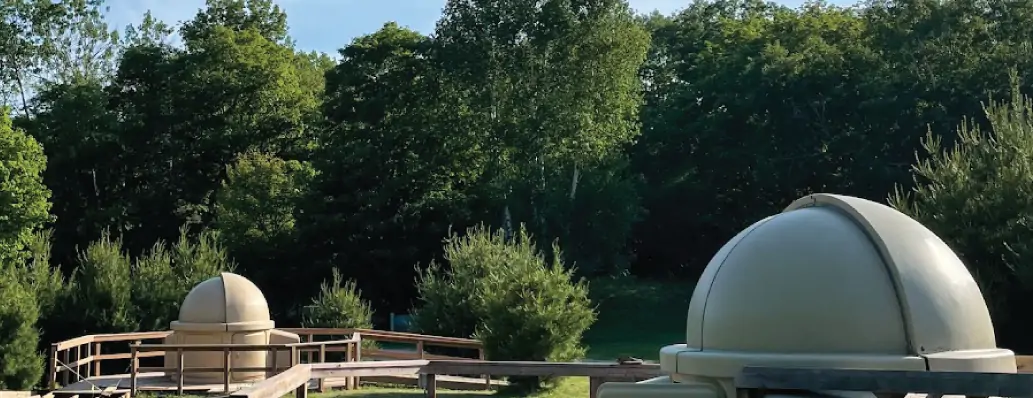
Astronomy PhD candidate Veronika Dornan served as the astronomer in residence at Killarney Provincial Park. She’ll be back again in October when the nights are longer (and bug free). Dornan has delivered dozens of talks and shows at the W.J. McCallion Planetarium and in the community. (Photos by Veronika Dornan)
BY Jay Robb, Faculty of Science
July 16, 2024
Veronika Dornan followed up the April 8 total solar eclipse with another awe-inspiring celestial moment.
This time, the astronomy PhD candidate wasn’t cheering alongside thousands of people at McMaster — she was alone with a telescope in the heart of Killarney Provincial Park just before midnight.
Dornan had the park’s telescope pointed at one of the hundreds of globular star clusters that make up the Milky Way. She was seeing light from thousands of stars that had travelled more than 10,000 years to reach the Earth.
This time there was no cheering: All she could say was a quiet “wow”.
Dornan drove five hours north to spend a week at Killarney Park as the astronomer in residence. part of an outreach program run by the park in collaboration with the Allan I. Carswell Observatory at York University.
Dornan applied because the program combines her two favourite things — astronomy and the great outdoors. While she’s a lifelong camper, hiker and canoeist, it was her first trip to Killarney.
Bruce Waters, who’s taught astronomy to the public since 1981 and co-founded Stars over Killarney, warned Dornan that once she went to the park, she wouldn’t want to go anywhere else.
The park lived up to the hype. Everywhere she looked was like a painting, something “a certain Group of Seven had already thought many times over.”
She spent her days hiking the Granite Ridge, Crack and Chikanishing trails and kayaking on George Lake. At night, she went stargazing with campers — or at least tried to. The weather didn’t cooperate most evenings — instead of looking through the park’s two domed telescopes, Dornan improvised and gave talks in the amphitheatre beneath cloudy skies.
Dornan has delivered dozens of talks over the years in McMaster’s W.J. McCallion Planetarium and out in the community, but “it’s a bit more complicated when you’re talking about the stars while at the same time fighting for your life against swarms of bugs.”
When the campers called it a night and the clouds parted, Dornan spent hours observing the stars. “I seriously messed up my sleep schedule.”
She also gave astrophotography a try during her residency, capturing images of the Ring Nebula and the Great Hercules Cluster.
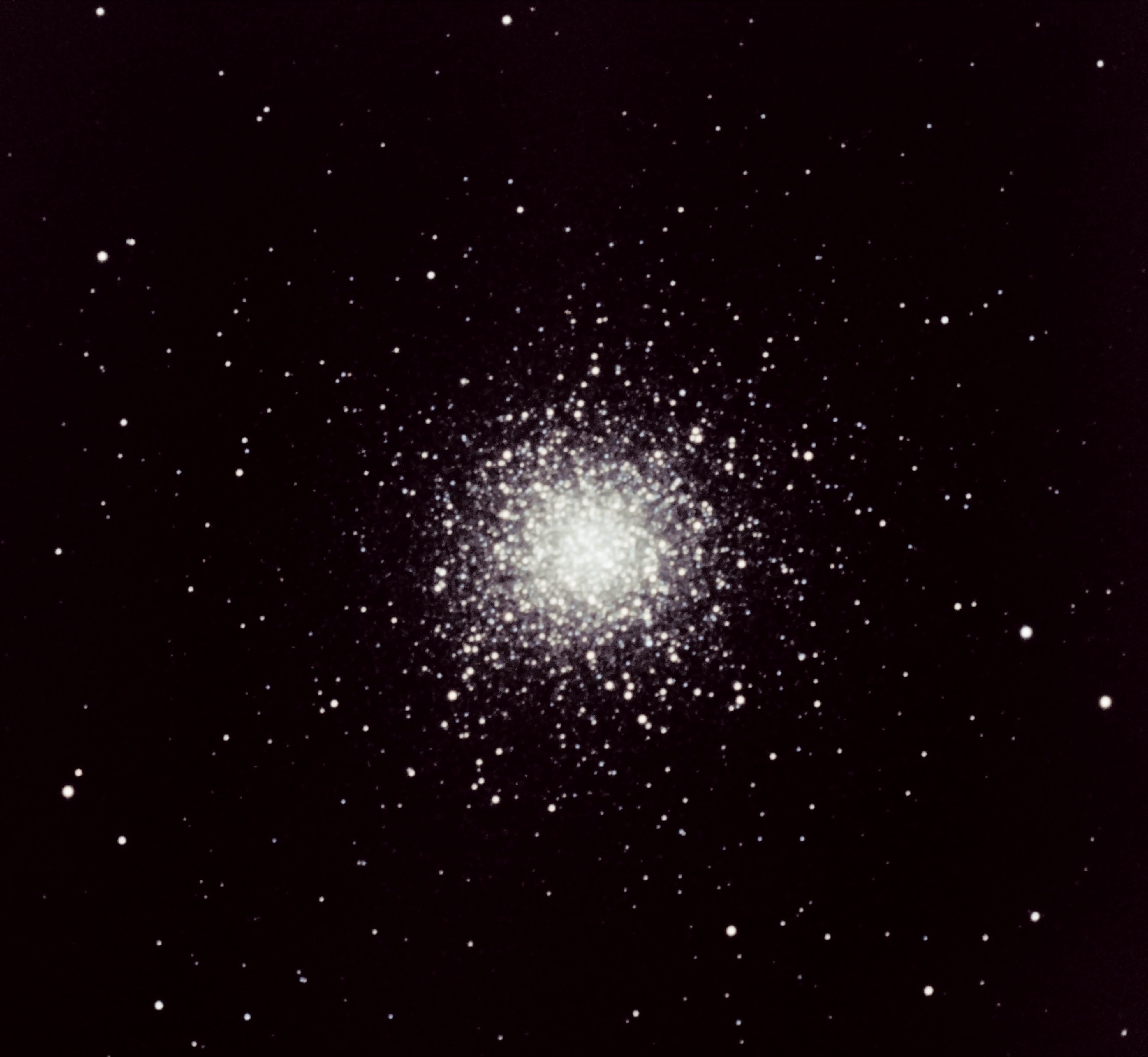
“People assume astronomers take their own photos. I needed quite a lot of guidance for how to take the images. It took a while to fiddle with the image properties, but I got my images.”
Dornan’s been invited back for another week-long residency in bug-free October, when longer nights offer more opportunities to explore and photograph the final frontier.
She’s aiming to defend her PhD thesis early next summer, then build a career that continues to combine research and outreach.
“Research leads to new discoveries which gives you exciting things to talk about. And if you’re not connecting with the public then what’s the point of doing research?”

Science
Where in Vancouver to see the ‘best meteor shower of the year’
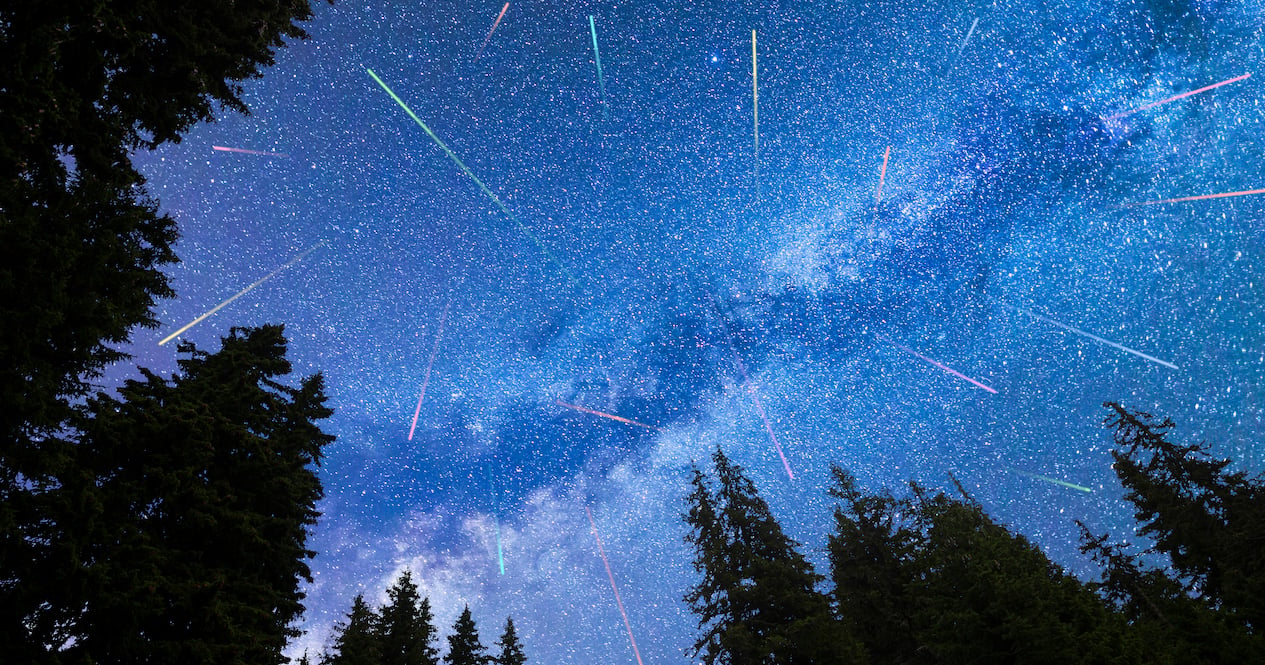
Eyes to the skies, Vancouver, because between now and September 1st, stargazers can witness the ‘best meteor shower of the year’ according to NASA.
Known for its “long wakes of light and colour,” the Perseid Meteor Shower will peak on August 12th, 2024 – so consider this list a great place to start if you’re in search of a prime stargazing spots!
Grab your lawn chairs and blankets, and seek as little light pollution as possible. Here are some ideal stargazing spots to check out in and around Vancouver this summer.
Recent Posts:
This island with clear waters has one of the prettiest towns in BC
10 beautiful lake towns to visit in BC this summer
Wreck Beach
If you’re willing to brave the stairs and the regulars, it doesn’t get much better than Wreck Beach for watching the skies – for both sunsets and stargazing. The west-facing views practically eliminate immediate distractions from the city lights.
Spanish Banks Park
Spanish Banks is the perfect mixture of convenience and quality. Its location offers unobstructed views of the skies above, and it’s far enough away from downtown to mitigate some of the light pollution.
Burnaby Mountain Park
If it’s good enough for a university observatory, it’s good enough for us. Pretty much anywhere on Burnaby Mountain will offer tremendous viewpoints, but the higher you get the better (safely).
Porteau Cove
A short drive from Vancouver gets you incredible views of the Howe Sound from directly on the water. And naturally, its distance from any nearby community makes it a prime spot for stargazing.
Cypress Mountain
In addition to having one of the best viewpoints in Vancouver period, Cypress Mountain (and the road up to it) is also a great place to watch the sky. For a double-whammy, we say that you come around sunset, then hang out while the sky gets dark. Sure, it might take a few hours, but the view is worth it.
So there you have it, stargazers! Get ready to witness a dazzling show this summer.

-

 News19 hours ago
News19 hours agoBlue Jays sweep Red Sox, Jansen in doubleheader
-

 News14 hours ago
News14 hours agoCanadaNewsMedia news August 2024: Cabinet retreat turns gaze to U.S. trade relations
-

 News11 hours ago
News11 hours agoChina accuses Canada of protectionism over 100% tariffs on electric vehicles
-

 News10 hours ago
News10 hours agoBMO reports $1.87B Q3 profit, provision for credit losses up from year ago
-

 News9 hours ago
News9 hours agoPolice issue Amber Alert for missing five-year-old in Quebec
-

 News23 hours ago
News23 hours agoLawyer for Coutts protester suggests jury rushed to judgment before long weekend
-

 News8 hours ago
News8 hours agoHoops player Anderson, swimmer Roxon named Canada’s Paralympic flag-bearers in Paris
-

 News8 hours ago
News8 hours agoToronto’s whooping cough cases more than double pre-pandemic average: public health














